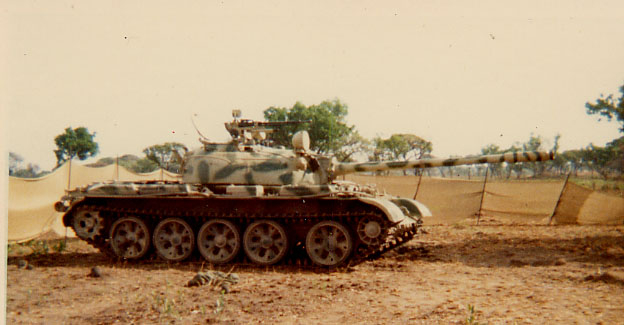
A Libyan T-55 tank
My lone flight in an F-16 over the Gulf of Mexico left me unable to tell the difference between the sky above and the water below. So I can imagine the challenge NATO pilots are having trying to pick out Muammar Gaddafi’s tanks from those being manned by the rebels trying to topple him — especially when the tanks in question were manned by Gaddafi’s forces not so long ago.
NATO said Friday that its warplanes probably killed at least five rebels near the oil port of Brega in a case of so-called “friendly fire” that is only going to increase as NATO promises to step up its attacks against Gaddafi loyalists. The rebels were driving a column of 18 T-55 and T-72 tanks toward Brega in the eastern part of the country Thursday when allied aircraft apparently mistook them for Gaddafi forces on the move.
British Rear Admiral Russell Harding, deputy commander of NATO operations in Libya, told reporters in Naples that NATO was having difficulty telling the two sides apart. “I am not apologizing,” he said. “The situation on the ground was and remains extremely fluid and until yesterday we did not have information that [rebel] forces are using tanks.” This was bound to happen: U.S. military officials, at least, have gone out of their way to say they are not in contact with the rebels, so how would NATO know when the rebels snared some of Gaddafi’s tanks?
NATO initially refused to apologize for the mistaken attack, which seems petulant: an apology doesn’t mean it was done deliberately, it simply means you’re sorry, in this case, for the loss of life. (NATO Secretary General Anders Fogh Rasmussen eventually said he “strongly regretted” the deaths.)
Gaddafi has done his best to make this happen: his forces increasingly have abandoned moving in tank columns after they were obliterated by U.S. airpower in the opening days of the conflict (which perhaps should have been a warning to NATO pilots that Gaddafi forces weren’t operating the tanks they attacked — as well as an indication that the rebels aren’t mentally firing on all cylinders).
“We’ve seen a tendency for them to get intermixed with the regime forces rather than maintaining some degree of separation which again would allow for more effective targeting of the regime’s forces,” Army Gen. Carter Ham, chief of U.S. Africa Command, told the Senate Armed Services Committee Thursday.
Gaddafi’s commanders have moved a lot of their armor into congested urban areas to protect it from aerial attack. They’ve also begun moving in civilian pickup trucks, with guns mounted in the rear, just like the rebels are doing. “They have shifted from their traditional use of conventional armored equipment which was easily identifiable as regime forces and therefore easily targeted,” Ham said. “They now operate largely on civilian vehicles. And when those vehicles are intermixed with the opposition forces, it’s increasingly difficult to discern which is which.”
The fog of war is rolling in. “For the last 48 hours and maybe longer, the situation in Brega and Ajdabiyah has been fluid,” Harding said. “If someone wants to define that as a stalemate, that’s fine.” Actually, fluid is more the opposite of, than synonym for, stalemate. It’s also the essence of war. Meanwhile, according to the Guardian, the rebels have begun daubing the tops of their vehicles with peach-colored paint to distinguish them from Gaddafi’s forces. At least until Gaddafi’s forces start doing the same.


